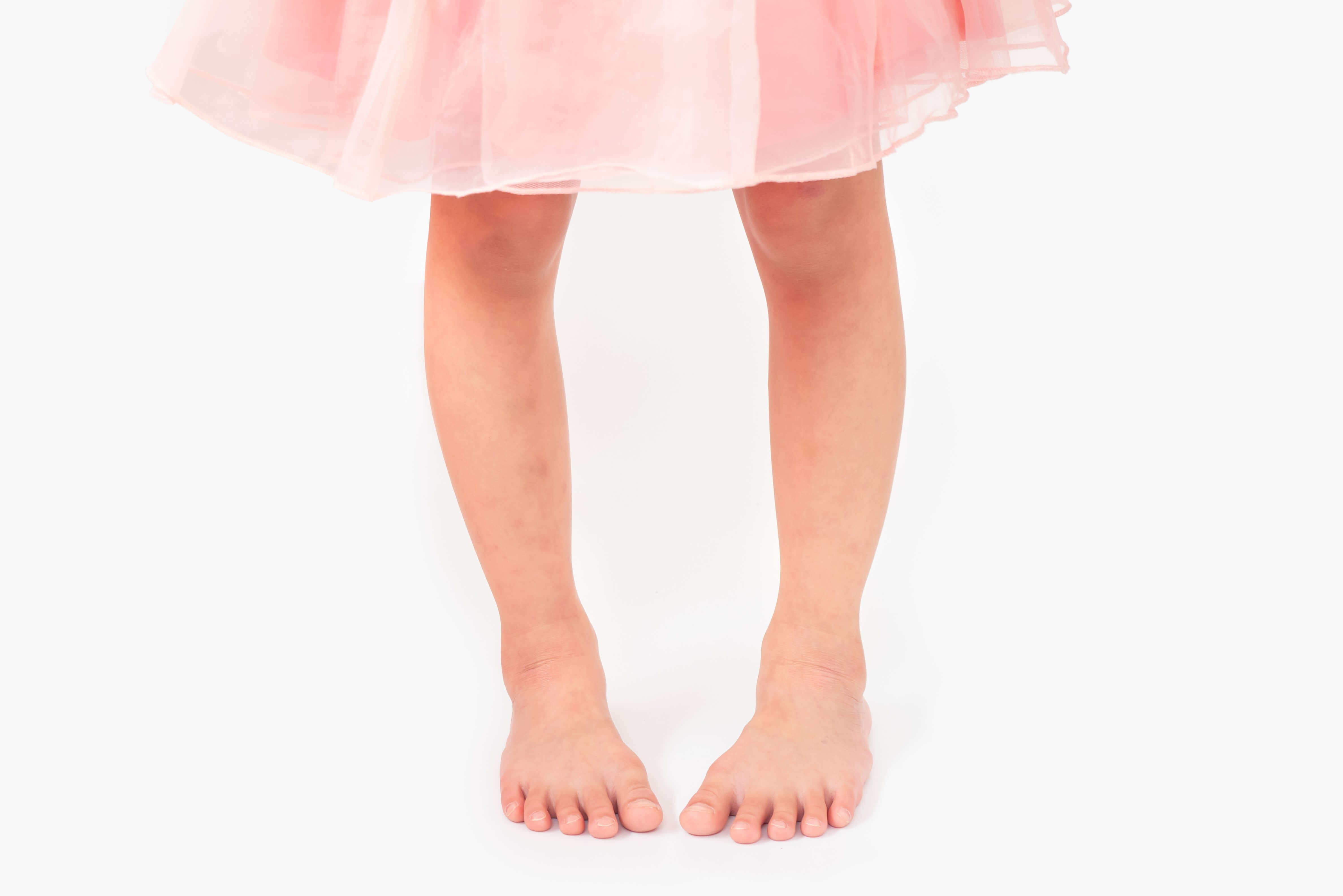
There are few things in life more amazing than watching your toddler slowly figure out the world around them, and take their first few wobbly steps across the room. This is an exciting stage in their development, and should be celebrated.
However, you may notice their stance looks awkward and they seem a bit bowlegged. This is usually nothing to worry about, but if you’re concerned keep reading to find out more about what bow legs are and their potential causes.
Bow legs, also known as genu varum, are typically where a child’s legs will bend outwards at the knees. You can see this most obviously when your child stands with their feet together. If there’s a noticeable gap between their knees, then they have bow legs. This is a natural stage in a child’s development, and usually nothing to worry about.
You may start to see if your child is bowlegged around the age your baby starts walking because it’s more noticeable when they’re standing. Bow legs can also appear to worsen slightly when children are learning to walk because their muscles and bones are still developing, and aren’t strong enough yet to stand straight.
Your child may even become slightly pigeon-toed, where their feet point inwards, as they walk to help them with their balance. Again, this is completely normal, and most children grow out of it as they age.
Bow legs are common in babies and toddlers. When they’re in the womb, a baby’s leg bones and joints often have to rotate to fit in the limited space, which can cause them to bend. This is possible because babies are born with cartilage kneecaps, which turn into bone (ossify) as they age. Cartilage is much softer and more flexible than bone, allowing for more lateral movement until their bones develop.
This phenomenon is known as a ‘physiological bow leg’ and is a natural, normal part of a child’s development.
For some children, bow legs can be a symptom of something more serious, like rickets or Blount’s disease. However, cases like these are very rare. If you’re at all worried, or notice the following circumstances, you should contact your doctor for more advice.
Bow legs are rarely serious, and children will usually grow out of them around age two. In fact, many children often veer the other way and get knocked knees until their legs are strong enough to grow straight in their early pre-teen years.
However, it’s worth noting that bow legs can make your child more clumsy if it means their balance isn’t up to scratch. This can result in more trips and falls, which can cause minor injuries. However the condition itself shouldn’t cause any pain.
Something you can do to help your child develop is ensure they have supportive first walking shoes. Walking is an important part of your child’s growth, and they need plenty of contact with the floor to develop a keen understanding of spatial awareness. Toddler shoes for outside use need to be flexible and well-fitting to protect their feet whilst they’re learning.
If your child still has bowed legs into adolescence, this can cause hip and knee discomfort because the muscles are having to overcompensate during movement. At this time, you should consider seeking advice from your doctor to prevent further issues as they age.
For children under two, there is no need for treatment for bow legs as they’re likely to grow out of them as they get older.
However, if this condition persists, or gets worse, you should contact your doctor to discuss your treatment options. Some children may need braces or special footwear to provide additional support as their joints develop.
If your child has rickets, your doctor will likely prescribe vitamin D and calcium supplements to counteract the deficiency and increase bone strength. They’ll also monitor your child’s growth, and you may be referred to an endocrinologist for more assistance if necessary.
Blount’s disease, which causes the shin bone to grow abnormally, affects less than 1% of the population. This is usually treated with a special brace to help the leg develop properly, or more rarely with corrective surgery to straighten the leg.
These conditions are rare, and the majority of the time any bowleggedness will correct itself with age. If you’re ever concerned however, you can contact your doctor for more personalised advice.
Author: Click Consult, published 31-07-2023.